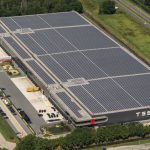Summer is finally here and the need for home cooling is inevitable. As a property owner, you can use solar energy, gas, and electrical energy sources for your cooling applications. Solar energy is the best source of energy for your property’s needs, eliminating the need for the other sources of energy. This source of energy is free, clean, and abundant especially during the summer months. Almost 75% of energy consumption in the USA goes to space heating and cooling applications. Also, 47% of the $107.9 billion consumed by 4.8 million households in the USA is related to heating and cooling uses.
There is a minimal 9 GW thermal solar installed capacity in the USA, despite the great potential that it has for the economy. These Solar energy sources are applied in residential, commercial, and industrial cooling applications.
The Basics Of Solar Cooling
Solar heating and cooling (SHC) technologies are systems which convert solar energy into usable thermal energy. Solar heating collectors harness the sun’s energy. The heat is then transferred into buildings to be used for cooling. Solar cooling technologies consist of steel, copper, aluminum, and in some cases, polymers. For this reason, these systems are non-toxic. Also, the energy is recyclable. But that is not all. Properly sized solar cooling systems can double up as heating purposes during winter.
Solar Cooling Systems
The need for air conditioning greatly strains the national grid during summer, making solar applications a very viable cooling option. There are two types of solar cooling systems namely desiccant systems and absorption chiller systems. The absorption chiller systems are the most common types of solar cooling systems. The principle of operation of the Solar cooling systems is very similar to that of refrigeration. The only difference between the systems is that the solar cooling systems do not use a compressor as is the case with refrigeration. In solar cooling systems, the heated liquid from solar collectors energize the absorption cycles. The absorption chiller systems have the benefits of being low maintenance and consume minimal amounts of energy, substantially reducing the costs of operation. Also, these systems eliminate the need for heating systems in colder areas as it gives off sufficient heat.
In the desiccants solar cooling systems, air is cooled by passing over a drying agent like silica gel, drawing out humidity from the air. This cooling action makes the air more comfortable and is then used to cool the living spaces. The solar heat used to dry out the desiccant thus recycling it for continual use. Desiccant solar cooling systems have numerous benefits. These systems can be integrated with other cleaner sources of energy such as gas since it operates on a heat-driven cycle, elevating the air temperature to an adequate reactivation level. Other indirect benefits include reduced microbial growth, minimal corrosion, and low humidity levels.
There are three key points that you should note as a homeowner to attain maximum efficiency with the use of solar cooling systems. These factors include the correct design of the systems, accurate sizing of the systems, and proper management when in use. As always, you can contact Solar 360 with any questions you may have. We’d be more than happy to talk with you.









